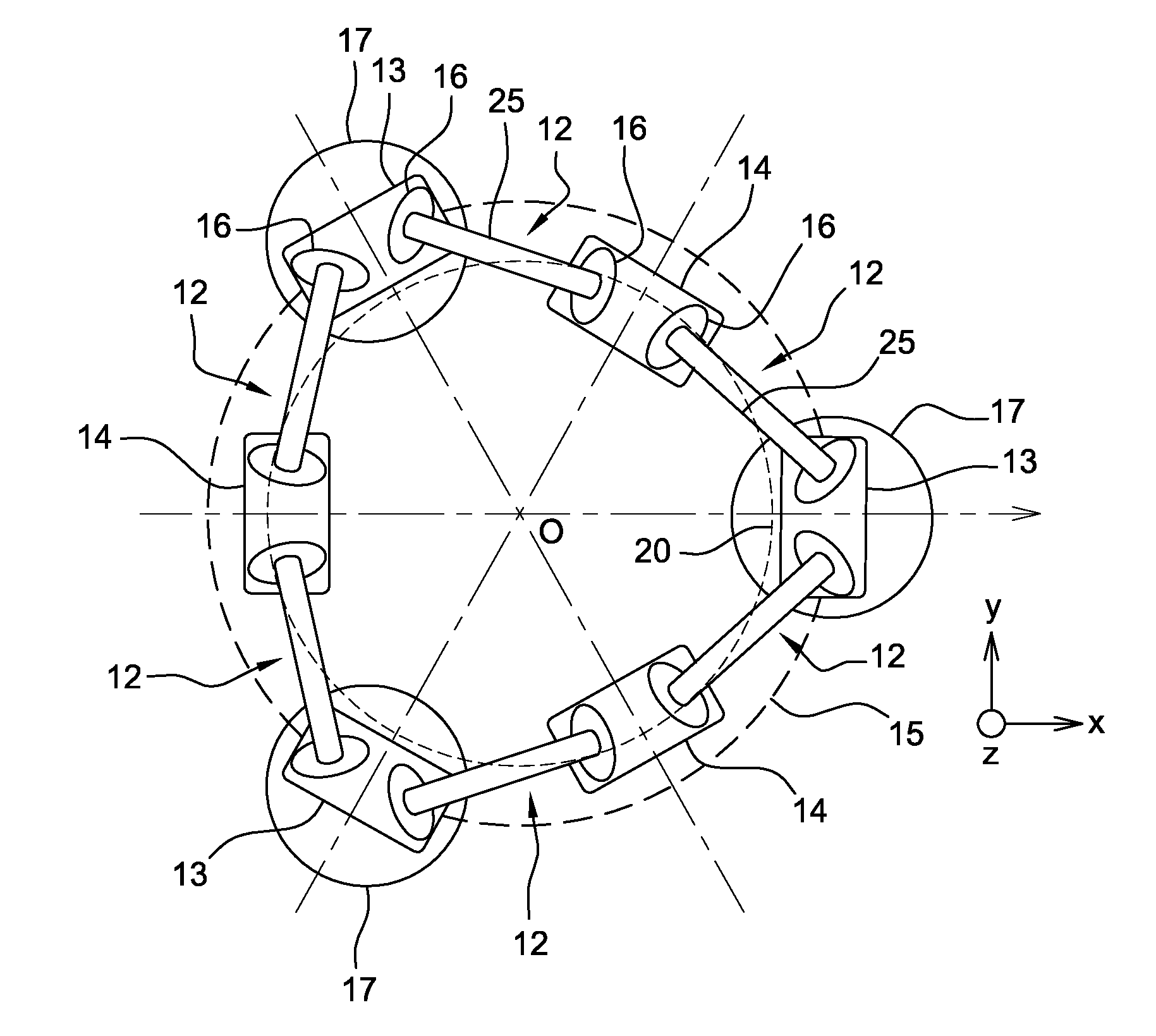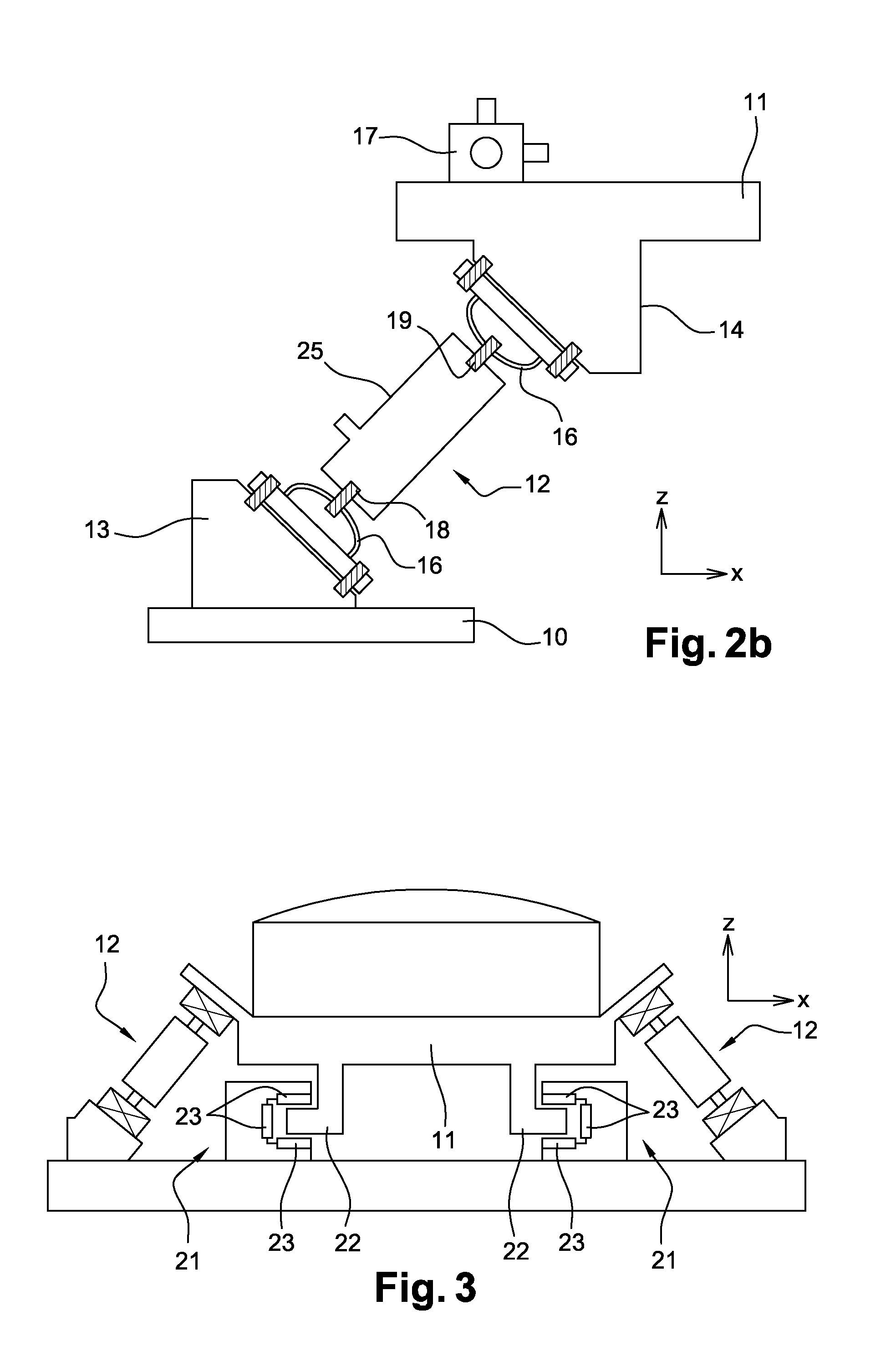Vibration isolating device
a technology of vibration isolation and isolating device, which is applied in the direction of cosmonautic vehicles, machine supports, other domestic objects, etc., can solve the problems of only being effective within a small frequency domain, inoperable on low-frequency disruption, and difficult to realize flexible hinge joints designed to withstand mechanical loads at launch
- Summary
- Abstract
- Description
- Claims
- Application Information
AI Technical Summary
Benefits of technology
Problems solved by technology
Method used
Image
Examples
Embodiment Construction
[0019]To this end, the invention envisages a vibration isolation device designed to be positioned between a load-bearing structure and an anchor plate on which a piece of equipment is fastened. In a first usage case, the equipment is a disruptive element that generates vibrations. The device must attenuate the vibrations transmitted to the structure. In a second usage case, the equipment is an element sensitive to vibrations. The device must attenuate, in the vicinity of the sensitive equipment, the vibrations generated by a disruptive element positioned on the load-bearing structure, where these vibrations are propagated to the equipment by the structure.
[0020]The device comprises a lattice made of bars, with each bar comprising at least one axial actuator, with at least one end-fitting of each bar consisting of an element made of elastomeric material (called “elastomeric element”).
[0021]If the bars have only one elastomer end-fitting, the end-fittings are all positioned on the sam...
PUM
 Login to View More
Login to View More Abstract
Description
Claims
Application Information
 Login to View More
Login to View More - R&D
- Intellectual Property
- Life Sciences
- Materials
- Tech Scout
- Unparalleled Data Quality
- Higher Quality Content
- 60% Fewer Hallucinations
Browse by: Latest US Patents, China's latest patents, Technical Efficacy Thesaurus, Application Domain, Technology Topic, Popular Technical Reports.
© 2025 PatSnap. All rights reserved.Legal|Privacy policy|Modern Slavery Act Transparency Statement|Sitemap|About US| Contact US: help@patsnap.com



